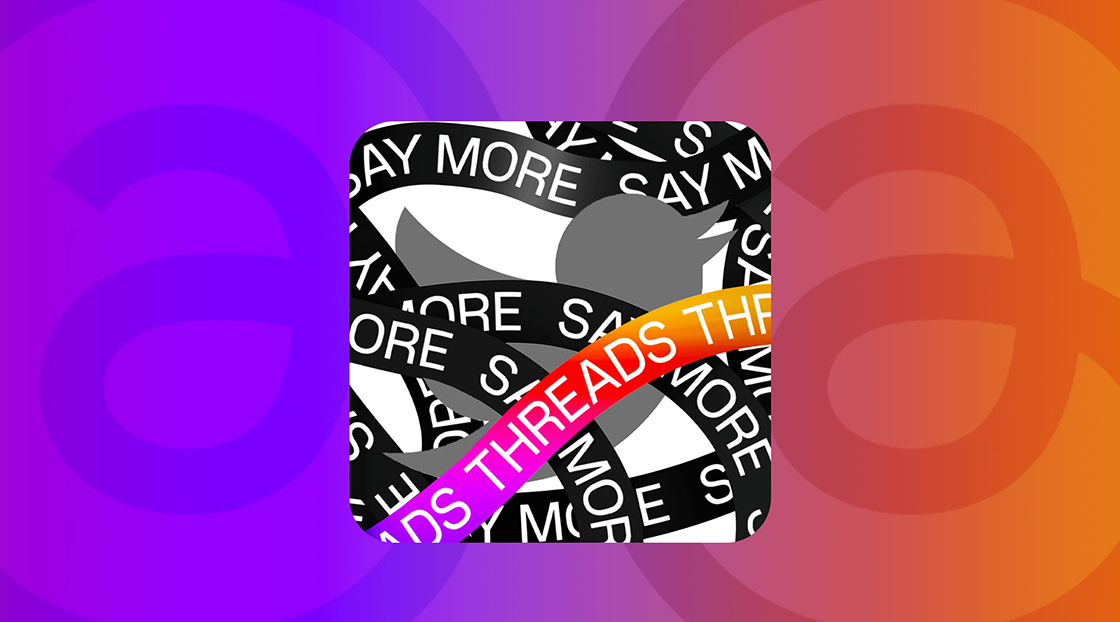Last week, Meta introduced Threads, its text-focused, Twitter competitor platform. With a launch perfectly timed to coincide with social media users’ ongoing dissatisfaction with Twitter and pent-up desire for an alternative, Threads is currently the front-runner in a slew of new social networks hoping to take down the bird app.
And it’s well on its way to do so, gaining more than 100 million users within the first five days of launch. By comparison, it took ChatGPT two months to reach the 100 million user mark and TikTok nine months.
If you’re a social media manager, you’re probably reading a lot about Threads right now and seeing other brands and universities post frequently and grow quickly. The higher ed social media manager groups are all abuzz with activity and ideas for how you can get high engagement rates on Threads. I’m guessing your FOMO is running high.
Here’s what higher ed social media managers and administrators need to know about the new social network.
The Basics
Threads works much like Twitter does, focusing on short text-based posts. The app itself looks a lot like Twitter and will instantly feel familiar to new users. (So familiar in fact that Elon Musk has already threatened to sue Meta for using trade secrets and hiring former Twitter employees during development.)
Currently, here’s what users can share:
- Text posts with a 500-character limit
- 10 Photos per post
- Up to 5 minutes of video
It’s Tied to Instagram
Gaining an excess of 100 million users in a matter of days is extremely impressive, but it’s also a product of the app being tied to Instagram and having a seamless sign-up process.
Already have an Instagram account? Well, your Threads account is waiting for you, just tap a few simple buttons and you’re in with a built-in following and the same username! (So don’t worry about someone else grabbing yours first.)
The real question is how many of those users will stick around and use the platform regularly once the newness wears off. Some early users have expressed concern about the extent to which Threads is requesting access to other applications and user data, which could cause countries to follow the European Union’s ban on the platform. But with the full backing of Meta, the new social network will likely have staying power.
Higher Ed is Already Getting Onboard
Universities are already hopping on the platform right after launch; capitalizing on the momentum of the app and experimenting with finding a voice there. Texas A&M, the University of Rochester, and the University of Arkansas are some good examples of schools that are already doing Threads well. That said, there’s no need to rush to get on Threads—there’s no reward for being first, and you still have time to wait and plan before jumping in.
It’s Still Missing Features
Threads was launched before it was fully ready to capitalize on Twitter users’ current frustration with the platform. It is currently a bare-bones social app, missing a lot of the features we’ve come to expect from social networks, including:
- Alt-Text
- Text Search Function
- Direct Messaging
- Hashtags
- Analytics
- Drafts Folder
- Desktop Version
- Post Scheduling
- Edit Button
- Simple Account Switching
- Trending Topics
- Paid Ads
Instagram CEO, Adam Mosseri has already stated that the Threads team is working on hashtags and text search and will be working on other features as well. But, there’s no telling when these features will arrive, so it’s important to take this into account when building a strategy for how your institution will use the platform.
This is especially true regarding alt-text features, as this pertains to accessibility compliance and is something universities will need to take under strong consideration when building content for the platform.
Chronological Feed to Come Soon
Right now, the Threads timeline is algorithm-based, showing users what it thinks will be most appealing to them. However, Mosseri has indicated that a reverse chronological feed, like Twitter’s, will be coming to the platform soon. This is great news as the real-time reverse chronological feed can be extremely important for crisis communications and live events like graduation and sporting events.
Takeaways for University Administrators
With the backing of Meta, Threads will likely be a major contender in the social media space, but much remains to be seen. Will GenZ take to it? And if they do, is it a space where they will want to hear from universities?
Additionally, the management tools for the platform are currently non-existent. So, your social media manager will be frantically posting directly from their phone with no ability to view Threads from a desktop, to pre-schedule posts or pull analytics—all while also managing your school’s other social platforms!
It’s important to be understanding and both give them time to develop a strategy and time for Threads to develop into the app it will one day become. Having a successful Threads account today will not reduce your summer melt or increase fall yields—not this year at least.
Worry about where your school’s Threads account will be 6 months or a year from now, not next week or next month.
Takeaways for University Social Media Managers
I’m here to remind you that this is a marathon, not a sprint. Higher ed has an advantage on Threads that other industries don’t: time. This summer launch gives higher ed social media managers time to experiment and plan while campus activities are relatively slow. You can prepare and have a solid plan in place for when students arrive on campus in the fall.
Take a breath, slow down, you’ve got this.






